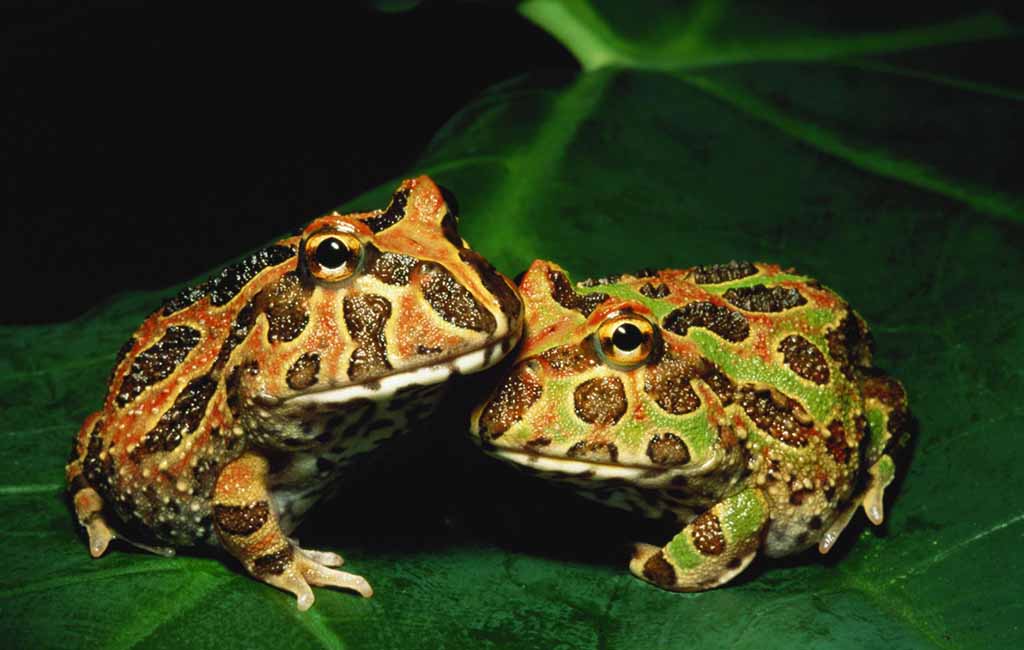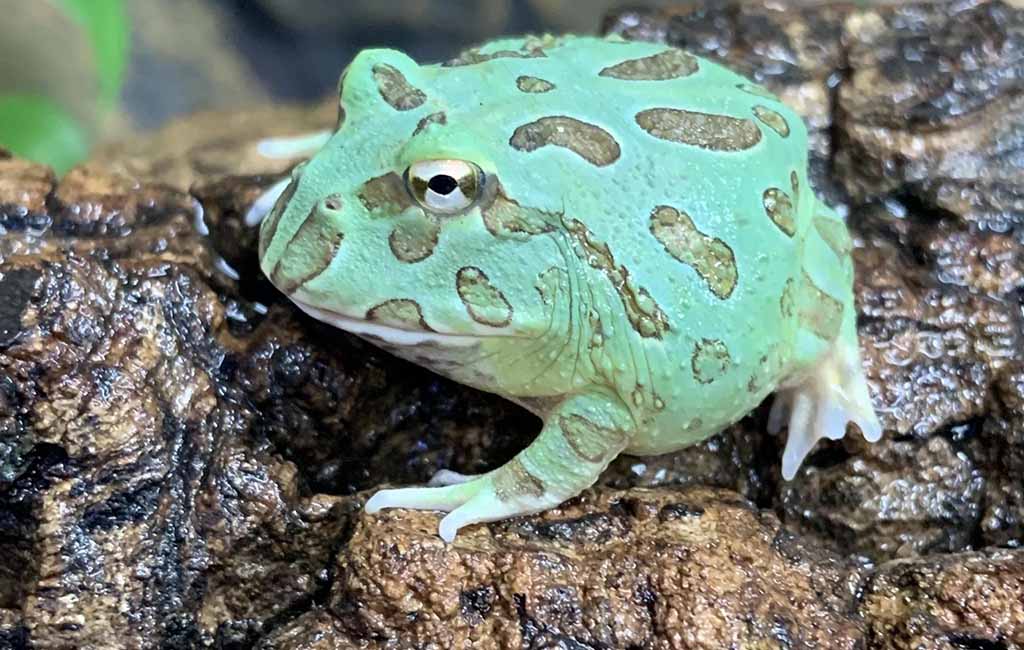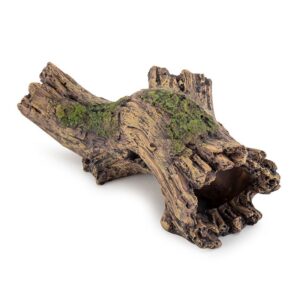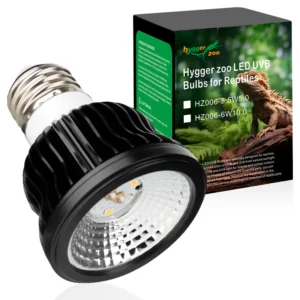In case you are wondering what the interesting thing with the Pacman frog is all about, then this is your chance to find out. Popularly recognized by their spherical-shaped body, together with their carnivorous nature, these specialty amphibians cause pet lovers and enthusiasts to sit up.
Content Table
But first, one wonders whence they originated and why these are considered perfect pets. This article involves a description of the Pacman frog’s lifespan, habitat, diet, growth stages, and facts regarding some of the questions people may have about these incredible frogs.

Pacman frog
Where Do Pacman Frogs Come From
Pacman frogs, or scientifically, Ceratophrys ornata, are an interesting type of frog that can be found in the south of South America, but primarily in Argentina, Brazil, and Uruguay. People like them as pets because of their odd looks and low level of needing attention and grooming.
Physical Characteristics
- Pacman Frog Size: Pacman frogs are of medium to large size, with an adult-measured average length of about 4–7 inches. If anything, females are larger than males, at least when it comes to material possessions.
- Appearance: It also gave them their other popular name: ‘Pac-Man’ due to their oval-shaped, stocky bodies and big mouths full of sharp teeth. They also have two fat pads above the eyes resembling the horns of young cattle, goats, or sheep.
- Coloration: Pacman frogs have large variations in color and phases. These include brown, green, yellow, and orange with spots and stripes. It is very important since this variation in coloration will enable them to blend in with their natural habitat.
Habitat and Behavior
- Natural Habitat: Pacman frogs are native to grasslands and savannas with soft, loamy soil and a few wells. They are mainly terrestrial, or rather semi-terrestrial; individuals of this species spend most of their time in the substrate.
- Behavior: These are mostly carnivorous frogs that hunt by camouflage and sudden attacks on their prey. They are not very mobile, and most of the time, they lie in ambush so that when prey is nearby, it cannot avoid being caught.
Pacman Frog Lifespan
- In the Wild: Pacman frogs are relatively long-lived in the wild; their average life span ranges from one to four years.
- In Captivity: With proper care, Pacman frogs can live much longer in captivity, with an average lifespan of 7 to 15 years. Some individuals have even been known to live for over 20 years.
Is a Pacman Frog a Good Pet?
Pacman frogs can also be suitable pets if one is in for a low-maintenance amphibian. To me, these frogs are funny-looking, have fairly easy care, and have some interesting behaviors. Nonetheless, they are advantageous for first to second-level pet caregivers with a clear understanding of the pets’ requirements.
Choosing the Right Pacman Frog for Captivity
When selecting a Pacman frog for captivity, consider the following factors:
- Species:
- Ornate Pacman Frog(Ceratophrys ornata): Popular for their vibrant colors and patterns.
- Argentine Horned Frog(Ceratophrys cranwelli): Hardy and adaptable, making them great for beginners.
- Fantasy Pacman Frog: A hybrid species, bred for unique colors and patterns.
- Color Morphs: They come in many color phases, including bright green and yellow, all the way to albinos, and some with certain patterns.
- Size: Captive-bred Pacman frogs can reach a size of 6 – 7 inches in adulthood, and the female Pacman is larger than the male. So choose the right size for your frog tank or bioactive vivarium.
- Health: Select a frog that is moving around (but not extremely so, within their range of the natural activity), has bright, healthy, alert eyes, and has no scratches or abrasions on its body.

Pacman frog lifespan
What Do Pacman Frogs Eat?
- Pacman frogs are carnivores, and their diet consists of live meals.
- Insects, mainly including crickets, mealworms, waxworms, and dubia roaches, form a major geckos’ diet. When they grow a bit older (5 to 6 days), larger foods such as the pinky mice may also be provided from time to time.
- Juveniles should be fed daily, whereas adults should be fed 2 or 3 times a week.
- Never give prey that is bigger than the head of the frog because the frog is likely to choke.
- While the food was accumulating in the form of small bugs, it was necessary to sprinkle them with calcium and the addition of vitamin D3.
How Big Do Pacman Frogs Get
Pacman frogs can grow up to arid and are found to be 4″-7″ in size; female Pacman frogs are observed to be bigger than male frogs. Their growth occurs in distinct stages:
- Hatchling Stage (0-1 Month): When they hatch, they are between 1-2cm in length. In this stage, they are very susceptible and mainly survive on things such as pinhead crickets.
- Juvenile Stage (1-6 Months): Growth is fast, and juveniles attain a length of 2–4 inches. They start developing bright skin and scales and become very hungry.
- Adult Stage (6+ Months): Ends up attaining a full-adult length of 4–7 inches; females are larger than males. They eat less often and should also be given food that doesn’t make them obese.
Facts about Pacman Frog
The Pacman frogs are one of the most widespread types of pet frogs due to their special look and comparatively simple demand. Here are some key facts about them.
- Appearance: They have a rounded tegumentary part, stocky; large mouth; two fleshy tubes ahead of their eyes, and horns.
- Coloration: They come in different colors like brown, green, yellow, and orange, depending on the number of spots and stripes.
- Pacman Frog Size: The common adults are normally around 4–7 inches in size, and females are known to be larger than males.
- Habitat: Endemic to South America, they are found in grasslands or shrublands withan uptake of moisture.
- Behavior: A case of ambush predators is characterized by an ability to camouflage itself and then grab prey with considerable speed.
- Pacman Frog Lifespan: When well treated, however, they can live for about 7–15 years, with certain of them extending up to 20 years.
- Diet: Carnivores include crickets, roaches, and horn worms as live food simply because it is most appropriate for them.


Leave a comment